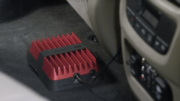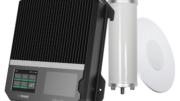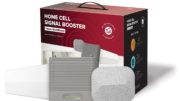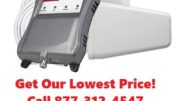Let’s take a look at getting a cell phone signal booster for your home. If you’ve done any kind of research into this, you probably know that it usually comes down to square footage. In other words, the size of your home determines which cellular signal booster you get. Well, that’s true for the most part, but the statement ignores some very important advice that we here at Solid Signal often give our customers. We often recommend getting the biggest cell phone signal booster you can afford, even if that booster is for areas that are larger than your home. Read on to find out why we say this…
Square Footage Isn’t Everything
Cell phone booster manufacturers use coverage in square footage to determine the differences between their products. If you’re considering getting one of these devices, there’s something you need to know. These square-foot ratings are based upon a home that is essentially a wide-open space. Unfortunately, few if any homes exist without walls, doors, windows, and other obstructions. These are some of the things can interfere with your booster’s performance, and the ratings don’t take these factors into account.
Here are some other factors that can negatively affect your cellular signal booster’s performance:
-
Distance from Cellular Towers: How far you are from your carrier’s tower can affect your booster’s ability to do its job.
-
Coaxial Cables: Not all coax cable is made equally. Some brands are better than others and this quality, or lack of it, can affect your booster’s performance. Speaking of cables, did you know that installations that are 150 feet long or longer tend to lose signal over that distance? This can affect your booster’s performance too.
-
What’s in Your Home: Wiring, aluminum studs, big appliances, and metal wall coverings can also drive the need for someone to get a more powerful booster.
-
Things such as carrier frequency, the type of antenna used, and amplifier gain are other significant factors to consider.
Any one of these factors can reduce with your cellular signal booster’s task, which is to reduce dropped calls, missed texts, and slow or interrupted data.
Home Cell Phone Booster Recommendations
Here at Solid Signal, we’ve made cell phone booster recommendations based on square footage. It’s a general rule that might be able to help people looking to improve cellular reception in their homes. If you haven’t seen it before, here here’s what we’ve told people looking to improve cell phone reception:
-
If you have a 1,500 square foot area, we recommend the weBoost Home 4G.
-
The weBoost Connect 4G enhances coverage to multiple devices in a 5,000 square foot area.
-
For coverage up to 7,500 square feet, there’s the Connect 4G-X.
These product recommendations are solid, but this guideline might not work for everyone because of the reasons we listed above. For example, a homeowner with 1,500 square feet of space might have a home with so many walls and doors that he or she needs a booster rated for 5,000 square feet. In a case like this, the cellular signal booster the homeowner gets isn’t “overpowered” at all. It’s exactly what they needed. It’s because of situations like this that our techs to tell people to…
… Buy the Strongest Cell Booster You Can Afford
Generally speaking, the more powerful the cellular signal booster, the more it costs. When it comes to cell phone booster strength, you definitely get what you pay for. To make sure you have enough booster strength for your home, we recommend you get the strongest one you can afford. In many cases, a more powerful booster will overcome most of the issues that typically interfere with your cell phone booster’s operation. Having a little extra power is also great if you have multiple people each with their own device under one roof.
Those on a budget might find it difficult to purchase the most powerful cell phone boosters. Does this sound familiar? If so, you might want to consider getting a refurbished cellular signal booster. In most cases, these devices have been barely if at all used. Usually, they’re returned items that the buyer realized he or she lived too far from the cell phone towers to take advantage of. In some cases, you can save 16-25 percent on a refurbished booster, and these devices come with a 30-day return period and a one-year manufacturer’s warranty.
Another possible solution is to have a multi-antenna system. Much like it sounds, this is one cellular signal booster with multiple indoor antennas placed throughout your house. Remember, the range of your inside antenna depends on three very important factors:
-
Physical obstructions inside your home
-
The power of the booster
-
Reception quality of the outside signal
Sometimes, a cellular signal booster needs a little help to perform up to its full potential. In these cases, a cell phone booster upgrade kit needed. These expansion kits help your existing 75-Ohm signal booster system get extra signal coverage. Another option is a passive distributed antenna system or DAS. These configurations typically use multiple antennas to help improve wireless reception in small to medium-sized businesses. It might be hard for the average homeowner to know exactly what they need to improve cellular reception in their homes. If this sounds familiar, there’s one thing to do…
… Call the Cell Booster Experts
Solid Signal is an online electronics retailer that specializes in cellular signal boosters. We carry a variety of these devices from weBoost as well as Hiboost, Smoothtalker, Surecall, Uniden, and WilsonPRO. We also carry choices for passive DAS units. What’s more important than product availability? Making answering your questions and providing product recommendations that you can count on. We do that, too. If you want the right cellular signal booster or passive DAS, give us a call at 888-233-7563. Let our experts help keep you connected at home!





